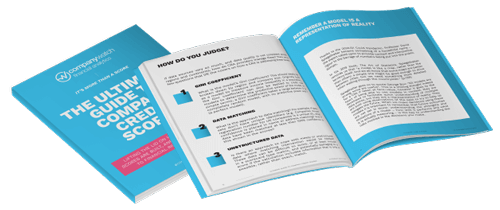5 Types of Business Fraud to Look Out For

According to UK Finance’s Annual Fraud Report, almost £1.2 billion was lost to business fraud in 2023 alone. With this number not looking to decrease any time soon, fraud remains one of the biggest threats to businesses in the UK. Aside from just financial losses, business fraud can harm your company in numerous other ways - from reputational damage in the industry to deteriorating employee morale.
This is why tackling business fraud pre-emptively is the need of the hour. For decades, Company Watch has helped businesses in the UK take appropriate measures to protect their business data and prevent fraud. However, in order to tackle business fraud head on, you need to know what you’re dealing with and what the indicators of business fraud are.
In this blogpost, we cover the following:
What is business fraud?
Business fraud occurs when someone tries to gain a financial advantage over a company through deceptive measures. They may do this in a number of ways, including theft, misrepresentation, or by concealing important business reports and information.
In essence, business fraud can be crippling for a company, with financial losses, loss of credibility, and huge legal penalties to boot. This is why knowing exactly what the threats are is so important. This will help you implement the appropriate strategies to deal with them.
5 types of business fraud to look out for
1. Financial statement fraud
Financial statement fraud occurs when a company deliberately misrepresents its financial standing and performance via doctored or manipulated business reports. There are a few reasons companies do this - to inflate profits, hide missteps and losses, and to mislead potential partners or investors.
Red flags that indicate financial statement fraud:
- Inconsistencies in financial data
- Unusual accounting entries
- Discrepancies between financial statements and other business reports
In 2001, former energy giant Enron was discovered to be engaging in financial statement fraud. They used complex accounting techniques to hide billions of dollars of debt, which led to their eventual bankruptcy. A lot of their top executives also faced business fraud convictions.
2. Asset misappropriation
Asset misappropriation occurs when a group or individuals steal company assets for personal gain. This may include inventory, cash, property, or equipment.
Red flags that indicate asset misappropriation:
- Discrepancies in asset records and business data
- Unusual financial transactions
- Changes in employee behaviour
3. Mandate fraud
Mandate fraud occurs when someone unlawfully gets you to change the details of a direct debit, bank transfer, or standing order. They do this by pretending to be a supplier that you make regular payments to.
This is a very common type of fraud because of how legitimate the requests typically seem. A good way to avoid mandate fraud is to double-check and verify all requests for changes to bank details. It is also best practice to keep a detailed record of all active standing orders.
Red flags that indicate mandate fraud:
- Unexpected contact by a “supplier”
- Suspicious payment instructions
- Urgent requests that are clearly trying to get you to act quickly
4. Vendor fraud
Vendor fraud occurs when a vendor intentionally misleads a customer or engages in fraudulent activity to gain an unlawful financial advantage. Vendors can do this by overcharging, providing substandard goods and services, or submitting false invoices and business reports. Conducting due diligence prior to working with a vendor can significantly lower the financial risk associated with the transaction.
Red flags that indicate vendor fraud:
- Inconsistent invoices or payment orders
- Unusual pricing i.e. not similar to market rate
- Lack of transparency during the due diligence process
- Sudden changes to contract terms
In 2018, non-profit Save The Children lost almost £1 million after cybercriminals sent them invoices for a project they were doing in Asia. The invoices were from a company that did not exist. The criminals were able to acquire details about the project by hacking the organisation’s emails.
5. Cyber fraud
Cyber fraud involves exploiting vulnerabilities in computer systems to steal sensitive information. This may include business data, financial details, or intellectual property. Businesses are typically attacked via phishing emails, ransomware attacks, and identity theft. To that end, it is absolutely crucial to build firewalls and safety measures to prevent a security breach.
Red flags that indicate cyber fraud:
- Suspicious links or attachments in emails
- Unexpected phone calls requesting financial information
- Unusual login attempts into your accounts
Preventing fraud in business
With the rapid advancement of AI, business fraud has the potential to get even more sophisticated. This is why the time to take preventative measures to stop business fraud and financial risk in its tracks is now.
Vigilance™ by Company Watch is a powerful fraud detection tool that analyses critical data points and identifies inconsistencies as they occur. With an option to set up real-time alerts, you can immediately become aware of any data anomalies and address them before they are able to do any significant damage. This makes Vigilance™ the perfect early warning system to beat business fraud.
Key takeaways
- Business fraud occurs when someone tries to gain a financial advantage over a company through deceptive measures such as theft or misrepresentation.
- There are 5 key types of business fraud to look out for - financial statement fraud, asset misappropriation, mandate fraud, vendor fraud, and cyber fraud.
- Protect your business from fraud by putting robust protective measures in place.

